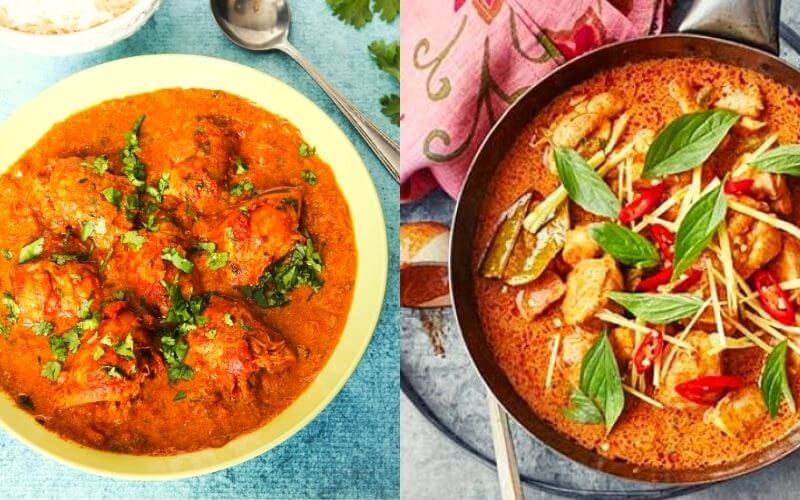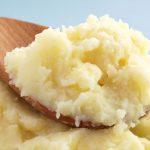As the sun rises, hitting the bustling markets of Bangkok and Delhi alike, the air fills with a tantalizing aroma – the undeniable scent of curry. A medley of spices and textures. But aren’t we missing a beat here? How similar or dissimilar are the Thai curry and Indian curry? Buckle up, as we embark on this culinary roller-coaster, whizzing through tales of these two dishes, each echoing tales of time gone by. And oh, by the way, I’m John Bird, your captain on this aromatic journey, and I’ve got stories aplenty!
| Thai Curry | Indian Curry | |
|---|---|---|
| Origin | Originated in Thailand possibly with Indian influences. | Originated in the Indian subcontinent. |
| Key Ingredients | Lemongrass, shrimp paste, galangal, kaffir lime leaves, coconut milk, tamarind. | Turmeric, cumin seeds, coriander powder, garam masala, chili, tomatoes, onions, ginger. |
| Types | Green curry, Red curry, Yellow curry, Massaman curry, Penang curry. | Kashmiri Rogan Josh, Goan Vindaloo, Tikka Masala, Butter Chicken, Dal Makhani. |
| Heat Level | Ranges from sweet to fiery, depending on type. | Generally spicy, but heat levels can vary drastically. |
| Pairings | Typically served with Jasmine rice. | Typically served with Naan bread or Basmati rice. |
| Vegan | Can be easily made vegan-friendly. | Some Indian curries are naturally vegan, but many include ghee or yogurt. |
| Signature Features | Fresh flavors, citrusy, tropical, with thick coconut-based sauces. | Rich, complex flavors derived from a mix of many different dry and fresh spices, often tomato-based. |
Epicurean Conundrums and Cultural Quandaries
To the uninitiated, a curry is a curry. A spicy pot of goodness. But delve a tad deeper, scratch just beneath the surface, and what unfurls is a canvas so diverse, it’s dazzling.
From Bangkok’s by-lanes, where simmering pots of green curry emit heavenly fragrances, to Delhi’s alleyways, where pots of butter chicken cook slowly over charcoal, absorbing the smoke and spices — the world of curries is vast and varied. The difference? It’s not just in the ingredients or cooking methods. No, sir! It’s the history, the tales, the traditions, and the stories passed down through generations.
The Prologue: Origins and Echoes

Thai Curry: A Tropical Whisper
Thai curries, a delectable melange of flavors, carry the whispers of the past. Infused with the essence of lemongrass, cilantro, and coconut milk, Thai curry, be it green, red, or yellow, is a culinary marvel. Rumor has it – some say speculation, others say fact – that centuries ago, seafaring merchants from India’s coast introduced the essence of curry to Thai shores. Thai cuisine, being as adaptive and unique as it is, inculcated the Indian flavors and infused them with the local tropical bounty.
Indian Curry: An Age-old Ode
Indian curry? It’s the symphony of the land. From the saffron-infused curries of the North to the coconut-rich gravies of the South, the aromatic spice-laden dishes of the East to the fiery preparations of the West, Indian curry is a journey. The very term ‘curry’ in India is diverse. While curry leaves are a staple in Southern India, curry powder is a Western concept. In essence, the real flavor lies in the masalas, the blend of spices, roasted, ground, and cooked to perfection.
Mosaic of Ingredients: The Soul of the Curry
Thai Tales

Central to Thai curry is its paste, made from a myriad of ingredients. Think lemongrass that wafts through the air, cilantro that adds a zesty punch, and coconut milk giving it a creamy texture. And then there’s the tamarind, the shrimp paste, the galangal – oh, the list goes on.
Indian Narratives

India, with its vast terrain, offers a smorgasbord of flavors. The curries? Even more so. An Indian curry, irrespective of its region, has a strong foundation. Turmeric with its earthy tones, cumin seeds popping in hot oil, coriander powder adding depth, and the omnipresent garam masala, which isn’t a spice but a blend – adding layers of complexity.
The Spice Trail: Mild, Moderate, or Melting Hot?
On the Thai Route
Want a bit of sweetness? Massaman curry beckons. Seeking a fiery thrill? Panang curry should be on your plate. That’s the beauty of Thai curries; there’s one for every soul.
Indian Odyssey
Take a walk through India, and every state will present you with its version of curry. The Kashmiri Rogan Josh with its deep red hue, the Goan Vindaloo which is not for the faint-hearted, or the ever-so-popular Tikka Masala — they’re worlds in themselves.
The Showdown: Varieties and Vignettes
Dive into the Thai world, and you’d be greeted with Green, Red, Yellow, and so much more. Swing by India? Butter Chicken, Dal Makhani, and the renowned Tikka Masala among a plethora of others. There’s always a debate, though, a gentle nudge and wink – Green Curry vs Tikka Masala. Who wins? The palate, always.
Pairings and Pleasures
In Thailand, a pot of curry often finds company in fragrant Jasmine rice. India? Fluffy naan bread and aromatic Basmati rice are the curry’s best companions. For the true aficionados, do swing by our article on Butter Chicken vs Tikka Masala. It’s a treasure trove!
To Culminate: An Homage to the Curry Bowl
As our journey draws to a close, here’s what remains – two nations, myriad flavors, one dish. The curry. As we lift the spoon, dunk it in, and take a bite, we’re not just tasting food. We’re imbibing history, culture, traditions, and tales.
A Note from John: From the alleyways of Bangkok to the by-lanes of Delhi, my culinary journey has been nothing short of magical. Here’s to more tales, trails, and curries!






